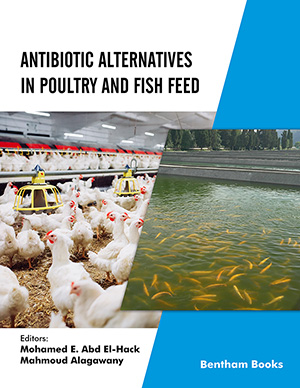Abstract
Aims and Background: Spirulina (Arthrospira) platensis (SP) microalgae were cultured in Zarrouk Medium (ZM), containing three nitrogen concentrations (N-limited, N-optimal and Nrich medium) in ten liter-photo-bioreactor (10 L PBR) for 15-days, in order to study changes in lipid compounds (total carotenoids and total lipids and their effect on fatty acid profile). Based on US patent, the yield of bioactive compounds (such as gamma-linolenic acid GLA, C18:3) extracted from microalgae biomass, mainly depends on the extraction processes (1). GLA has much attention with respect to its therapeutic properties such as its ability to decrease blood cholesterol levels.
Methods: The impact of the addition of N in cultures of S. platensis in terms of growth, biomasses and induced lipid compounds (total carotenoids and total lipid contents and its fatty acid profile), as well as the Sonication (SON) and Microwave (MIC) process as aiding techniques for lipid extraction compared with a Cold Condition (COL), was examined. GC/MS method was used to determine the fatty acid profile of lipid extract of SP cultures.
Results: In all S. platensis tested culture, the SP was growing successfully, with varying degrees. In N-rich media, the highest cell growth rate and biomass yield were obtained compared with that recorded in other cultures. Under an N-limited condition, SP had higher Total Carotenoids (TCAR, 45.54 mg/g dw) and total lipid contents (TL, 29.51%± 1.92 g/100g dw) compared with that recorded either in N-rich (11.2 mg/g dw) or in N-optimal (6.23 mg/g dw) cultures. Thus, SP copes with the N -stress by altering the metabolic pathways towards inducing lipid biosynthesis. To maximize the TL and TCAR extraction yields, from N-limited cultures, a set of operating process was applied including the Sonication (SON) and Microwave (MIC), which were used as aiding techniques for lipid extraction compared with the Cold Condition (COL) techniques. The results showed that the extraction efficiency of the S. platensis TL increased in the following order: MIC (29.51%± 1.92) > SON (25.46% ± 1.65> COL (20.43% ±1.43). In a comparative study for its fatty acid profiles (FAPs) among all SP cultures, lipids were analyzed by GC/MS. The predominant fatty acids (>10%, of total FA) were found to be myristic acid (C14:0, MA), palmitic acid (C16:0, PA) and oleic acid (C18:1).
Conclusion: The study concluded that the N-limited condition was found to have a strong influence on biomass dry weight and lipid contents and total carotenoids in SP cells compared to either Nrich or N-optimal conditions. The use of sonication and the microwave techniques lead to a great increase in the extraction of lipid contents and in high amount Polyunsaturated Fatty Acids (PUFAs) in N-limited cultures, in particular, the omega-6 (ω 6) and omega-3 (ω 3) of the essential C18 fatty acids. It seems that the SP rich in lipid content with a high amount of GLC produced under nitrogen limitation in PBR conditions can be used as a food additive or as a nutritional supplement.
Keywords: Microalgae, Spirulina platensis, photobioreactor, lipids and carotenoids, biomass, N-limited cultures.
[http://dx.doi.org/10.5897/AJFS2013.1082]
[http://dx.doi.org/10.1007/s11738-009-0273-8]
[http://dx.doi.org/10.1186/2241-5793-21-6] [PMID: 25984489]
[PMID: 26262722]
[http://dx.doi.org/10.1166/jnn.2016.10899] [PMID: 27398435]
[http://dx.doi.org/10.1007/s10811-013-9983-9]
[http://dx.doi.org/10.1590/S1516-89132007000100020]
[http://dx.doi.org/10.2331/suisan.58.931]
[http://dx.doi.org/10.1002/jsfa.6023] [PMID: 23339029]
[http://dx.doi.org/10.1039/c2fo10194g] [PMID: 22234291]
[http://dx.doi.org/10.1016/j.tibtech.2014.07.004] [PMID: 25168414]
[http://dx.doi.org/10.1016/j.biortech.2012.10.099] [PMID: 23206809]
[http://dx.doi.org/10.1016/j.biortech.2012.05.104] [PMID: 22727605]
[http://dx.doi.org/10.1155/2016/1785938] [PMID: 27525017]
[http://dx.doi.org/10.1007/s11783-014-0649-x]
[http://dx.doi.org/10.1080/10498850.2011.654381]
[http://dx.doi.org/10.1111/j.1365-2621.2009.01926.x]
[http://dx.doi.org/10.1016/j.biortech.2011.11.133] [PMID: 22209130]
[http://dx.doi.org/10.1016/j.btre.2016.04.001] [PMID: 28352532]
[http://dx.doi.org/10.3989/gya.050213]
[http://dx.doi.org/10.1016/j.biortech.2014.12.076] [PMID: 25621723]
[http://dx.doi.org/10.1007/s10811-005-7213-9]
[http://dx.doi.org/10.5958/j.2229-4473.26.2s.133]
 26
26 2
2



















